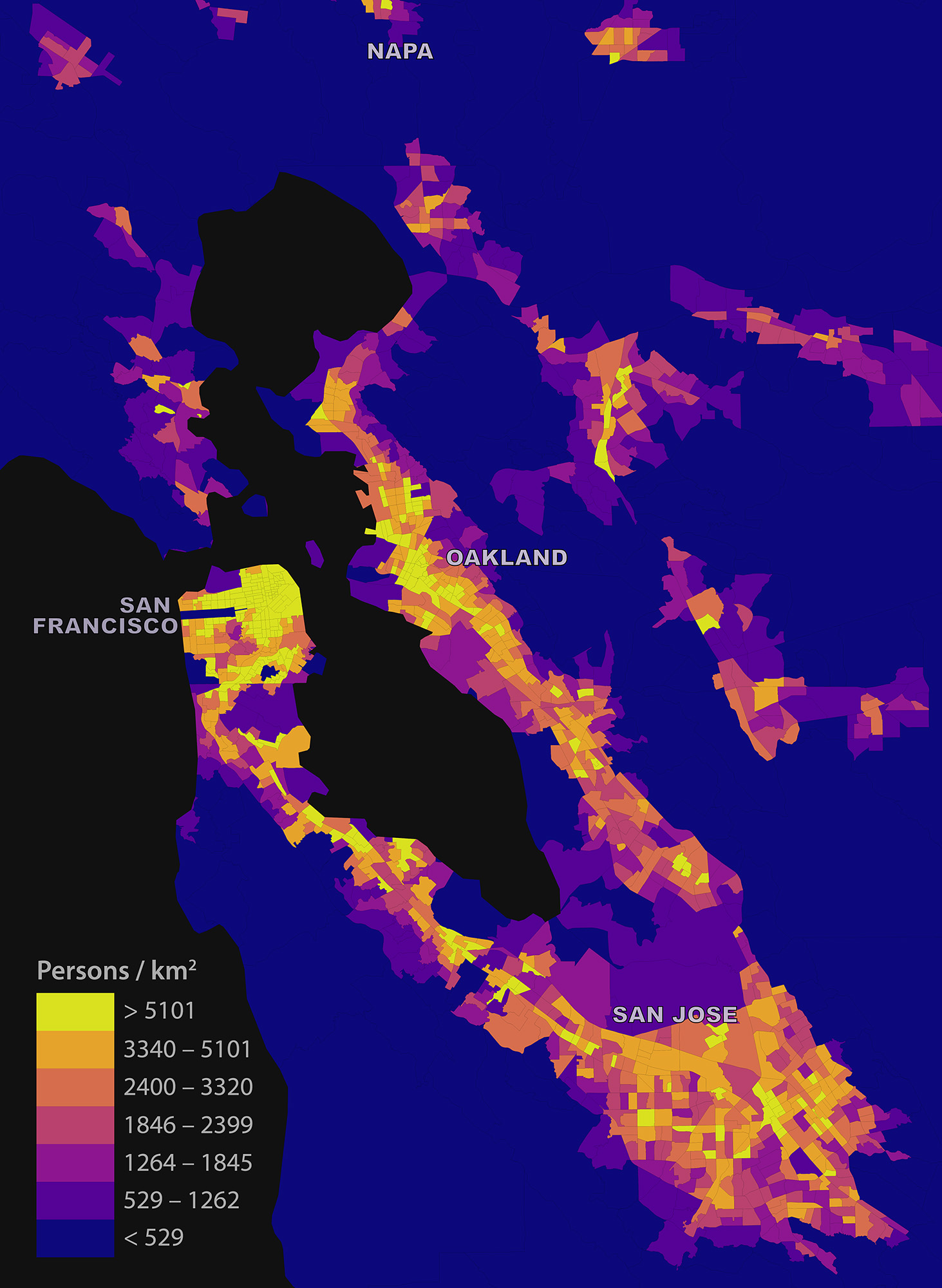My short article “Estimating Local Daytime Population Density from Census and Payroll Data” is out now in the latest issue of Regional Studies, Regional Science. I discuss a method for estimating local daytime density across a metropolitan area using US Census and LEHD LODES data, and dig into some limitations and biases. I look at the San Francisco Bay Area as a case study:
From the abstract:
Daytime population density reflects where people commute and spend their waking hours. It carries significant weight as urban planners and engineers site transportation infrastructure and utilities, plan for disaster recovery, and assess urban vitality. Various methods with various drawbacks exist to estimate daytime population density across a metropolitan area, such as using census data, travel diaries, GPS traces, or publicly available payroll data. This study estimates the San Francisco Bay Area’s tract-level daytime population density from US Census and LEHD LODES data. Estimated daytime densities are substantially more concentrated than corresponding night-time population densities, reflecting regional land use patterns. We conclude with a discussion of biases, limitations, and implications of this methodology.
You can download the article open-access from RSRS. Also check out the original blog post with an interactive web map.
